
First and Only Weekly Online Fanzine Devoted to the Life and Works of Edgar Rice Burroughs
Since 1996 ~ Over 15,000 Webpages and Webzines in Archive
Volume 3337

 |

ECLECTICA v.2010.12 |
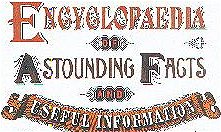 |
|
What's In A Name? |
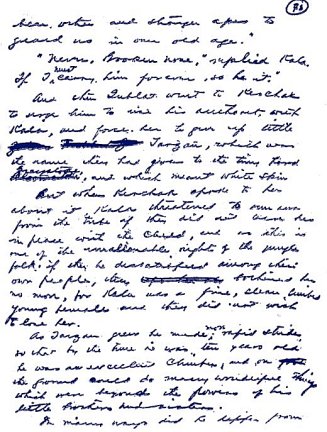
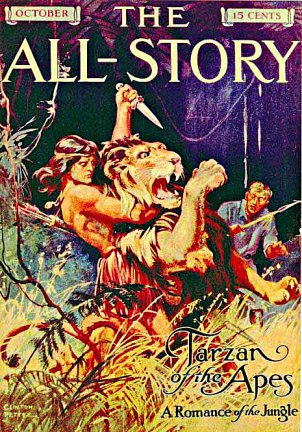
The story's title page shows that ERB submitted his work under the pseudonym
"Normal Bean."
But when the story was printed in "The All-Story Magazine," October
1912,
a transcription error transformed Burroughs' pen name into "Norman
Bean."

|
ERBzine 0483 and ERBzine 0483a |
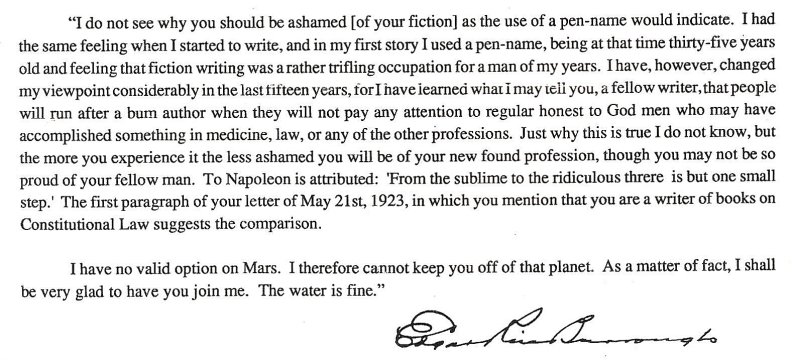
|
ERBzine 0219: The Lost Words of ERB For more on Ralph Milne Farley see Den Valdron's articles: ERBzine 1514: Radio Free Venus and ERBzine 1515: Radio Pellucidar |
![]()
|
|

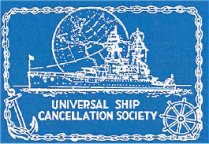
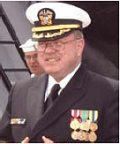 |
USS CAHABA (AO 82) during World War II. Larry Brennan (L-6221) shares the historical background of the ship's
operations.
|
USS CAHABA (AO 82)
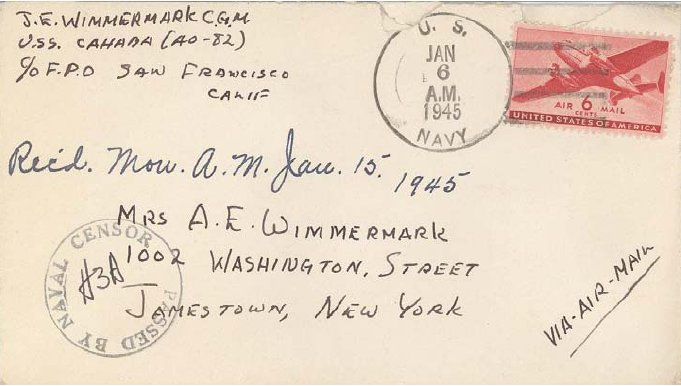
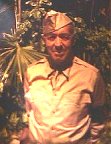 |
ERB: The War Years Series The Oldest War Correspondent of WWII Reports from the USS Cahaba http://www.erbzine.com/mag33/3369.html |
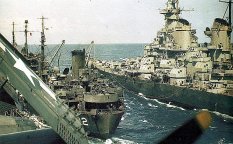 |
![]()
|
|
Medicine: Dum-Dum Fever
TIME ~ Sep. 17, 1923Kala-azar, or Dum-Dum fever, a mysterious disease somewhat similar to malaria, frequently fatal and extremely disabling, is so prevalent in Eastern India, particularly Assam, Bengal and Madras, that its transmission constitutes "probably the most important unsolved problem of tropical medicine," according to Dr. L. E. Napier and his colleagues, who have been doing research work on Kala-azar for several years at the Calcutta School of Tropical Medicine. The Indian Medical Gazette, of Calcutta, devoted its July issue to a special Kala-azar number.
The treated cases of the disease have risen 200% in one province since 1913, though this is probably largely due to better diagnosis and popular enlightenment, and it is estimated that there are 2,500,000 cases in Bengal alone. The symptoms are: remittent fever, emaciation, roughening of, the hair and especially enlargement of the spleen and liver. There are several disturbances of the blood and the endocrine system.
The characteristic organisms, always present in Kala-azar are called Leishman-Donovan bodies (from the British surgeons who discovered them in 1903). They are most irregularly shaped and spotted little beasts, in one stage developing tails and called flagellates. How they get into the body or are transmitted from man to man is unknown. They are normally only a parasite of man and the bedbug. While this fact would seem suspicious, various thorough investigations have not been able to prove that the bedbug is the transmitting agent. It is believed by many that some species of biting and bloodsucking insect is guilty, and further work on the suspects is projected. But it is not inevitable that insects transmit it direct; possibly contaminated food is to blame.
The treatment is not yet as successful as desired, but best results seem to be obtained with the salts of antimony injected intravenously or intramuscularly. Experimentation on monkeys, rats, etc., is beginning to produce important results, and cooperation between the various researchers will undoubtedly in the near future lay bare the secret of Kala-azar, and devise another triumph of preventive medicine by cutting off the disease at its source of transmission.
'Forest' woman returns from Cambodian jungle
Believed dead for 18 years, woman was found naked, unable to speak
Reuters/MSN ~ January 21, 2007
HANOI — A woman has been returned to her home in Vietnam’s Central Highlands 18 years after she went missing as an eight-year old girl tending cows near the Cambodian border, her father told a newspaper on Thursday. Policeman Ksor Lu long believed that his daughter had been eaten by a wild animal until last Saturday when he was told that loggers had found “a forestman” at a village in Cambodia’s province of Ratanakiri.Lu arrived and “recognised his daughter from the first sighting” even though her body was blackened and she had long hair down to her legs and could not speak, according to the account in the Vietnam Rural Today newspaper. Lu said his daughter, Ro Cham H’pnhieng of the Jrai ethnic minority group, probably spent most of the time in the jungle in Cambodia since she went missing in 1989.
The loggers told Lu that they caught her after realising that someone had sneaked up and taken their lunch. Lu said that at first it was difficult bringing her back to normal life because she resisted showering, wearing clothes or using chopsticks, fending him off and shouting and crying. Four days later she started cooperating, Lu said. “It is not easy indeed but life is waiting ahead for her,”
Ksor Lu's 8 year-old daughter was tending cows near the Cambodian border when she mysteriously disappeared. For the last 18 years he believed she had been eaten by a wild animal, but last Saturday the two were re-united. Lu was called because loggers claimed to have found "a forrestman" who'd been sneaking up and stealing their lunches. He arrived to find a woman with hair down to her legs who couldn't speak -- but despite her outward appearance, Lu immediately recognized his daughter. It's been difficult to engage the young woman, Ro Cham H'pnhieng, in everyday life. According to Lu, she's resisted showering or wearing clothes, and has been fending him off -- often shouting and crying. Fortunately, she's starting to come around.
Read the unofficial version . . . and more . . . and the Wikipedia version
Japan Waits on Venus Spacecraft
BBC News ~ December 7, 2010Japan's space agency (Jaxa) is working to establish the status of its Akatsuki mission to Venus. The spacecraft fired its main engine just before midnight GMT on Monday in a manoeuvre designed to allow the planet's gravity to capture the probe. Akatsuki then briefly lost contact with Earth as it moved behind the Venus. Scientists said they would know later on Tuesday whether the operation to insert the satellite into the correct orbit had been successful or not.
Akatsuki was launched to the inner-world by an H-IIA rocket in May. Its goals include finding definitive evidence for lightning and for active volcanoes. It will not be alone at Venus; the European Space Agency's Venus Express craft arrived at the planet in 2006. The pair are due to conduct joint observations. Venus is almost identical in size to our planet, and is thought to have a similar composition. But there the resemblance ends.
The thick Venusian atmosphere is opaque to instruments that operate at visible wavelengths and so the Japanese probe carries five cameras that are sensitive in the infrared and ultraviolet parts of the electromagnetic spectrum. This instrument suite will enable scientists to investigate the clouds layer by layer. Infrared sensitivity can also be used to study surface composition. This is how scientists hope to detect active volcanism. Europe's Venus Express probe recently found lava flows that could have been younger than 250,000 years old.
It has been a busy year in space for Japan. The major success was the safe return to Earth of the Hayabusa probe which had collected dust grains from the surface of an asteroid. The same H-IIA rocket that launched Akatsuki also launched the country's Ikaros solar sail - the first practical demonstration of a spacecraft being propelled around the Solar System by the pressure of sunlight alone. Assuming Monday's manoeuvre worked properly, three more engine burns are planned to refine Akatsuki's orbit before science operations can get under way in earnest.
~ Submitted by Jim O'Brien
A Brief History of Modern Fantasy Literature
Part I and Part II ~ June 21, 2009
By Michael L. Westmoreland-White, Ph.D.The American author, Edgar Rice Burroughs (1875-1950) is most famous for his novels and short stories concerning “Tarzan,” an son of an English lord who is raised by apes, teaches himself languages, and grows up to be “king of the jungle.” Though wildly improbable, the main Tarzan novels contain little or no explicit fantasy elements. But Burroughs also pioneered several science fantasy works of a “sword and sorcery on other planets” type as well as lost world novels. The most famous of these were a series of novels concerning Captain John Carter of Virginia (a Civil War veteran) who is mysteriously transported to a "Mars" that was nothing like the Mars that even the astronomy of Burroughs' day -- a "Mars" the natives call "Barsoom," containing beautiful Red Martian princesses who need rescuing from giant, 4-armed, green Martians in a desert world of canals with a strange combination of high technology and swords. Burroughs also wrote of Carson of Venus (Amtor), and Pellucidar (a lost world at the earth's core). This kind of Sword and Planet science fantasy would influence later writers like Lin Carter, the highly misogynist John Norman, and writers as diverse as Ray Bradbury, Robert A. Heinlein, Kim Robinson, and Michael Moorcock have paid tribute to Burroughs' Mars stories.
Mountain Gorilla Numbers Increase
BBC Earth News ~ December 7, 2010The population of endangered mountain gorillas has increased significantly in the last 30 years, say researchers. A census carried out in the Virunga Massif - where most of the world's mountain gorillas live - revealed 480 individuals living in 36 groups. Conservationists say that, 30 years ago, only 250 gorillas survived in this same area. Along with the 302 mountain gorillas from a census in Bwindi in 2006, the world population is now more than 780.
The Virunga Massif includes three contiguous national parks: Parc National des Virunga in the Democratic Republic of Congo, Volcanoes National Park in Rwanda and Mgahinga Gorilla National Park in Uganda. The only other location where mountain gorillas exist is Bwindi Impenetrable National Park in Uganda. A 2003 census estimated the population in Virunga at 380 individuals - so the current figure suggests that the population has increased by just over 25% in the last seven years. Conservationists say the increase is thanks to that a collaborative "transboundary" effort by organisations in the Democratic Republic of Congo, Rwanda and Uganda to protect the gorillas and their habitat.
But, according to the African Wildlife Foundation and International Gorilla Conservation Programme (IGCP), the animals are still very much under threat. A joint statement from the two organisations reported that a recent five-day patrol in the Virunga Massif discovered and destroyed 200 poachers' snares. Poachers typically do not target mountain gorillas, but the snares they set are a still a threat. Director of the IGCP Eugene Rutagarama said: "Collectively, we cannot let down our guard on the conservation of these incredible animals. "While mountain gorillas are physically strong, they are also incredibly vulnerable."
~ Submitted by Jim O'Brien
Son of Tarzan Opens Santa Barbara Museum
New Museum Serves Up an Eclectic Archive of Artifacts
Santa Barbara Independent ~ December 9, 2010A short nine-iron shot from the tourist-tint of State Street, at the seaside end of Helena Street, Jim O’Mahoney busily prepares to give Santa Barbara a brilliant, bizarre, and largely unexpected gift. He is putting his hyper-collecting, quasi-pirate, and full-blown bohemian arts’-eye-view of the world into a new museum dedicated solely to this mountain-, valley-, and beach-rich wedge of the planet we call Santa Barbara.
Fronted by two massive elephant doors from India—each side weighing over 1,000 pounds—the space is stuffed with things like the original El Camino Real bell from Rincon; a hand-carved buttress of Juan Cabrillo; an incredibly rare black-and-gold California flag, circa 1862, from the Santa Barbara Presidio; an homage to Santa Barbara’s own Nostradamus, Gin Chow; and a big, custom-made book of fairy tales from Neverland Ranch. It’s a still-coming-together eclectic archive of weird, wonderful, and occasionally spooky artifacts from S.B. days gone by and is the ideal western edge for the endangered Funk Zone beyond. It’s the sort of place that only an individual like O’Mahoney, a self-described “treasure hunter” with a trademark cackle that smacks of mid-grade mischief, could pull together.
With more than 65 years of adventure under his belt, O’Mahoney is, among myriad other things, a surfer, skateboarder, artist, and all-around fun hog who also happens to be one heck of an antique collector and dealer. His space on Helena, which he calls his “nest of funk,” has been the informal clubhouse for his wide-ranging collections for the past 28 years.
In 1992, he opened up the Surfing Museum—a place often overlooked but unequivocally enjoyed by all who happen to wander in—to the public. However, after deciding a year and a half ago to sell much of that initial collection, which included the ring that Captain Cook was wearing when he “discovered” Hawai'i, to Jimmy Buffet for Buffet's Honolulu Surfing Museum, this son of Tarzan (literally—O’Mahoney’s dad, Jock, was one of the first actors to play Tarzan in the movies) saw his surf museum in need of a redo. In the time since, as he has worked to make over the wave-riding side of things with other gems from his vast collections, the regular foot got the idea to organize some of his non-surf, Santa Barbara-specific artifacts in a space of their own.
But his modesty grossly understates the marvelous and truly unique nature of the end result. Whether you are digging an abalone-inlayed Yater longboard, checking out the ukulele Marilyn Monroe famously strummed in the movie Some Like it Hot, finding yourself staring at the program from James Dean’s last car race (which was here in Santa Barbara), or being transfixed by the bell from Santa Barbara’s fatal Easter Sunday trolley crash in 1907 . . . if you live in Santa Barbara and find yourself growing weary of the big-brand invasion and the high-gloss gentrification, his little slice of Helena is just what the doctor ordered. More>>>
|
Our ERB Eclectic Series and ERBzine News |
|
|
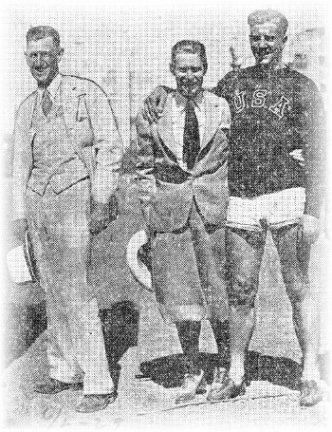
June 2, 1929 - Jr. Olympics Boyd Comstock ~ Charlely Paddock ~ Herman Brix . |
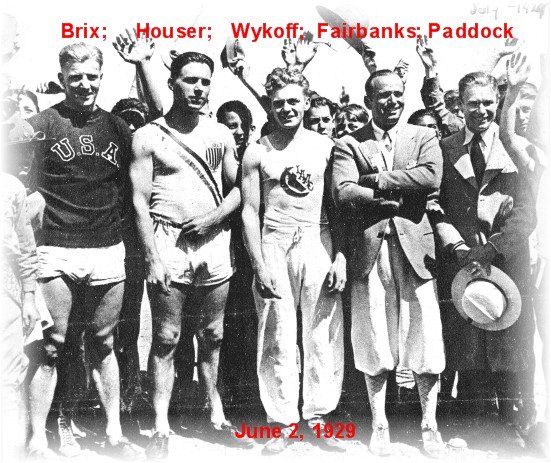
June 4, 1929 Athletic Stars Delight Youthful Sports Enthusiasts |
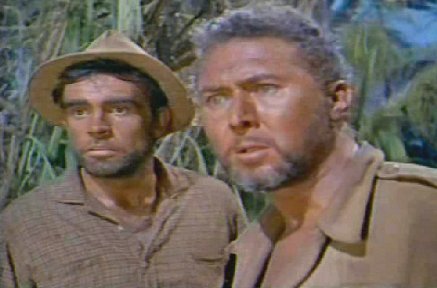
A young Sean Connery as the villain in Tarzan's Greatest Adventure |
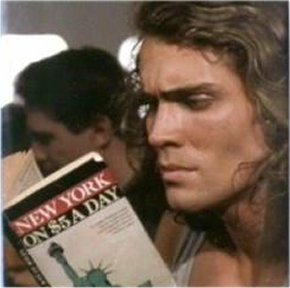
Joe Lara in Tarzan in Manhattan |
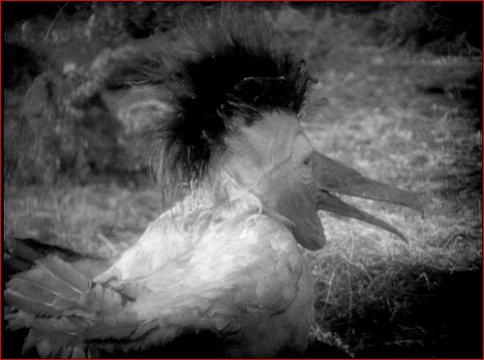
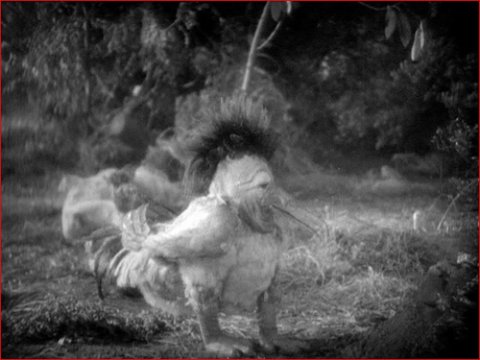
In almost every one of the Johnny Weissmuller Tarzan films, there's a trek up the treacherous cliffs that leads to the escarpment where Tarzan and Jane are developing a mini suburban home in the jungle, complete with homemade domestic gadgets and a fully equipped kitchen. Quite often, they use library footage, or second-unit sequences to show the local wildlife. There's a lot of recycling in these films, with action scenes and shots of Tarzan swinging through the trees (performed by a trapeze artist in some cases) appearing repeatedly. So, it's always a pleasant surprise when they throw in something novel.
En route to the escarpment this time around, the group that is ostensibly seeking Jane's signature on a family fortune is actually going to try and entice her back to England, while Captain Fry (John Buckler, who died in a road accident a week before the film's release) aims to capture Tarzan, presumably to stick him in a sideshow. Thus is efficiently established Tarzan and Jane's ongoing see-saw dialectic between civilisation and … er, whatever the jungle is supposed to represent by the time they've built all the household appliances out of bamboo. On the trek, Fry's cowardly and ineffectual assistant Rawlins (a career playing butler clearly beckoned for Herbert Mundin) checks out the local animals, growing increasingly uneasy at the sight of big cats and crocodiles. The final straw, though, the one that makes him question his sanity, is the appearance of a large, thick-legged bird. Click on the slideshow to view
Notice anything odd about it? Like Rawlins, I did a double-take. I’m no naturalist (that's animals, not clotheslessness), but I think I recognise a wide variety of species from this crazy planet of ours. But yes, the bird is actually a bloke in a costume. Not just any bloke -- that's Johnny Eck, "half-man" sensational star of Freaks (1932).
Having looked up this moment, I was surprised to find that it was itself used in the first Weissmuller Tarzan film, Tarzan the Ape Man (1932). Had I not noticed it? Why did they choose to slip in this surreal moment, dressing up a human actor for one of the animals? They occasionally use actors in ape suits for complex bits of monkey business, but the "scenic" shots of wildlife are mostly shot on location using real animals. Only when they need something to attack or be ridden by a human do they cut to trained animal actors. I suspect the answer is that they did it because they could. The footage was shot during the making of Freaks, another MGM production, that would eventually be released a month before Tarzan the Ape Man, and might even be making sly reference to the bird creature into which Olga Baclanova is transformed at the end of Browning's Freaks film. It's tempting to read into it a subtext about capture and escape, the threat of Tarzan being turned into a sideshow exhibit, but it was probably just an opportunist in-joke.
Eck sounds like a pretty amazing guy, exploiting the prominence offered by his extraordinary physique to pursue his eclectic interests in arts and entertainment; he was a painter, pianist, diarist, magician, actor and, best of all, a Punch and Judy man. Tom Waits namechecks him on the Black Rider album, and loosely based the song Table-top Joe on his life. Find out more about him at the great Johnny Eck Museum.
Wikipedia Note: After Freaks, Eck was featured as a bird creature or "Gooney Bird" in three Tarzan movies: Tarzan the Ape Man (1932), Tarzan Escapes (1936) and Tarzan's Secret Treasure (1941). In order to create the bird costume used by Eck for the Tarzan films, footage which was filmed during the production of Freaks in 1931, a full body cast was taken of him.
|
Tarzan Escapes Tarzan the Ape Man Tarzan's Secret Treasure |
JOHNNY WEISSMULLER
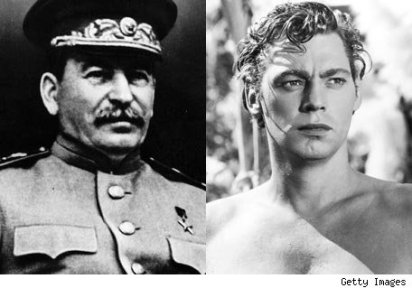 |
Stalin enjoyed action movies like 'Tarzan' and westerns with lonesome cowboys who saved the day. However, Stalin would constantly criticize American movies because they were too "anti-communist," and at one point he allegedly ordered John Wayne to be assassinated because he was standing in the way of the revolution. Luckily, Wayne dodged that bullet, and lived to make numerous other great movies. |
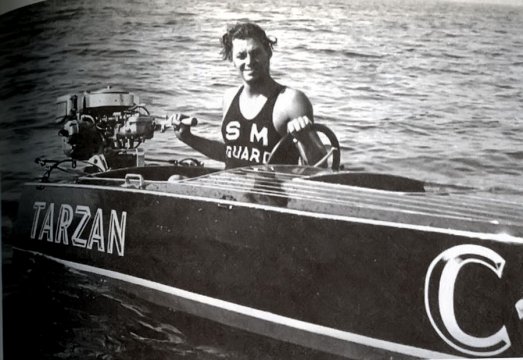
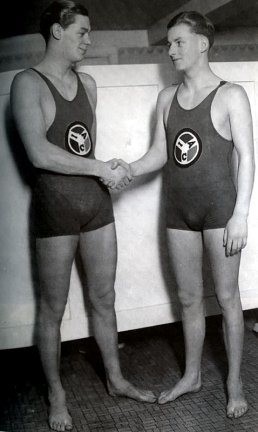
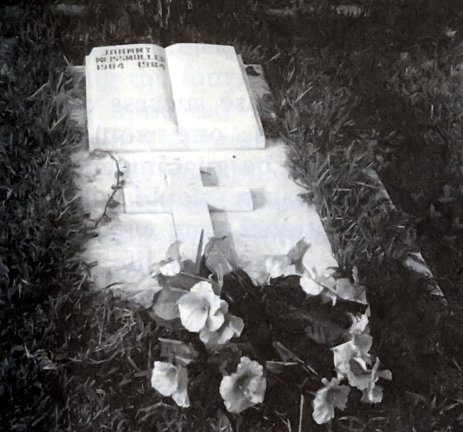
.
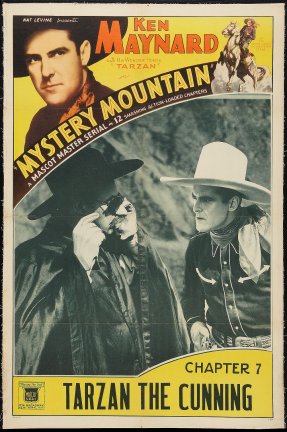
A Brief History of Tarzan
By Franck Benedittini
Ref: www.freemooviesonline.com
Tarzan fans around the world have a dull and boring job to thank for his existence, for it was whilst working in such a job that Edgar Rice Burroughs dreamed him up. The job was as a pencil sharpener wholesaler, and inspiration to begin writing came whilst checking the placement of adverts in pulp fiction magazines.
Tarzan of the Apes saw his debut in the pulp fiction magazines, a publication called All Story, in October 1912. It was unusual for a novel published in a magazine, because it was released in its entirety rather than the normal serialized format that most stories were released in. It was a huge hit, and Burroughs immediately wrote a sequel [actually the medieval romance, The Outlaw of Torn. He then wrote Tarzan of the Apes], but was shocked when this was rejected by the editor of All Story. Rather than wasting the time he invested in the book, he approached a competitor, and this magazine published it instead. It was another success, and so Burroughs decided it was time to take the success a step further. He began approaching publishers with the aim of reaching a larger audience with Tarzan as a book. Though they were polite, all refused to publish it.
The first interest came from a New York newspaper editor, Albert Payson Terhune who wanted to serialize it, which led to further interest from other newspapers country wide. The growing interest and enthusiasm of readers finally tweaked bought the attention of a small book publisher, A.C. McClurg & Co in Chicago. In June of 1914 the book went on sale, and proved to be quite popular. The publication of the book also led rapidly to Hollywood interest, with movie producers wanting to put the story on the big screen. There were many complexities that the studios were unsure how to deal with however because till that time no one had successfully and convincingly filmed as would be needed -- with wild (and dangerous) animals, trees and thick vegetation.
When opening night [for Tarzan of the Apes] finally came around on January 27th 1918, audiences had been promised the world -- the large number of the most impressive wild animals imaginable. Yet for the safety of the actors what the audience of that Broadway Theater in New York saw wasn't quite as described, having been filmed in Morgan City, Louisiana. This did not take away from the film and Tarzan went on to be a huge hit, and one of the earliest films to take a million at the box office. The earliest of the Tarzan movies were silent, but the talkies were soon to come and with them would come a series of Tarzan films staring Johnny Weissmüller.
James Pierce would later [1927] take the leading role, and also wed Burroughs' daughter, Joan. So when the thirties came around, and radio shows were at the height of their popularity, they had a ready made team for the voice actors. On September 10, 1932 the show made its debut, with Pierce voicing Tarzan and Burrow's [sic] daughter Joan as the voice of Jane. The show broke from the normal routine of live broadcasts, due to the desire to use elaborate sound effects that needed to be pre-recorded. Thus, it was sent to radio stations on phonographs that were to be put on air.
With the roaring of lions, the rustling of leaves, screams, and the sounds of many other animals and effects, all you needed was an active imagination to be drawn into the show and so its popularity was huge. At fifteen minutes a show, it ran for two years and a second radio show was soon under way. This, for some reason was never broadcast in America. A second radio show did find air time in America, beginning in 1951 and again running for two years, with one half hour installment per week.
A few years prior to the radio debut, Tarzan had found himself portrayed in a daily newspaper comic strip. Joe Neebe had approached Burroughs with the suggestion, and went on to hire Hal Foster to adapt the novel for comic strip publication. It was released over a period of ten weeks, with the first strip being published on January 7th, 1929. The strips were later compiled into the first Tarzan comic book to be sold, so conquering yet another form of the media that was available at the time. The Sunday comics were a slightly different species-a color comic that could portray the action with far more excitement. March 1931 saw the start of this run, with Rex Maxon behind the color illustrations. He only lasted six months, soon to be replaced by Burrow's [sic] illustrator of choice - Hal Foster.
The Tarzan that Johnny Weissmüller played on the big screen was a little different to the earlier versions, because the rights to the story already belonged to a movie studio. When MGM wanted to start a series of movies, the legal aspects were circumvented by a re-write, and simplification of the story. With genuine footage of African jungles, the new variety of Tarzan was released in 1932. With this new syndication came another boost for the popularity of the comics, and books. Two things that would be remembered for a long time also came from this particular series; Tarzan and Jane as a Hollywood couple, and the Tarzan cry that little children would be screaming for generations to come.
Time changed and people moved on, and Tarzan fell quiet for a while, till in 1962 a Los Angeles librarian proclaimed the novels immoral (and stated that Tarzan and Jane were living in sin) and attempted to have them removed from the library shelves. Her efforts had rather the opposite effect-instead, fans leaped to the defence of Tarzan, and interest was once more stirred. Novels were reissued, and more movies were made.
The last media form was conquered in 1966 -- Tarzan made it to the small screen, and movies would still be being made eighty years later, with the Disney animated hit Tarzan, that opened in 1999. It is now approaching one hundred years since the world first learned of the Lord of the Jungle, and yet he remains popular-make believe escapism for generation after generation the likes of which few others can claim. With all of the Tarzan novels still in print, and other merchandise still available more than fifty years after the author's death, the legend of Tarzan is as alive today as it ever was!
THE NEW ADVENTURES OF TARZAN
Tarzan
and the Green Goddess
Tarzan
and the Trappers
Tarzan
of the Apes
Tarzan
the Fearless
|
Tarzan of the Apes 1932 Tarzan and the Diamond of Asher 1935 Tarzan and the Fires of Tohr 1936 Tarzan, Lord of the Jungle 1951 |
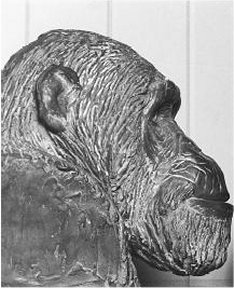
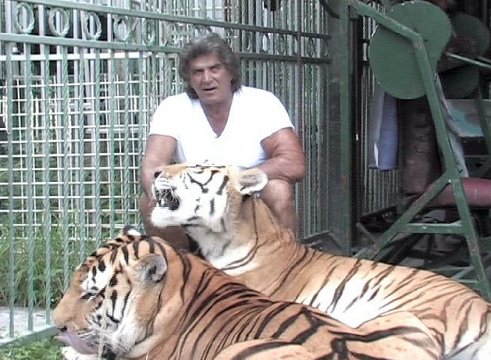
Steve Sipek (aka Tarzan actor Steve Hawkes) with two
of his pets
|
ERBzine 2772 |
![]()
|
|
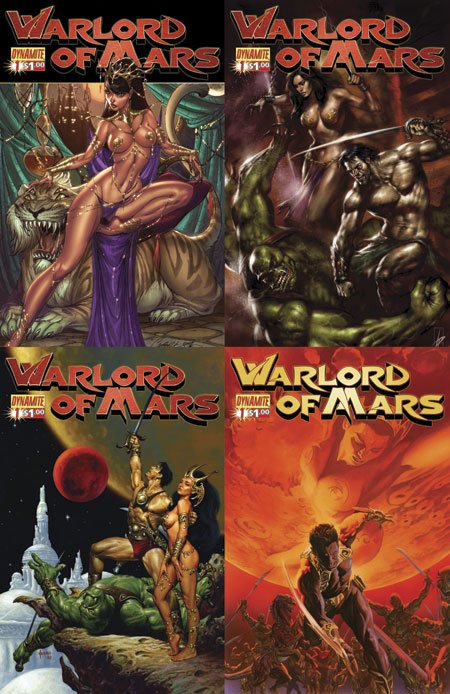
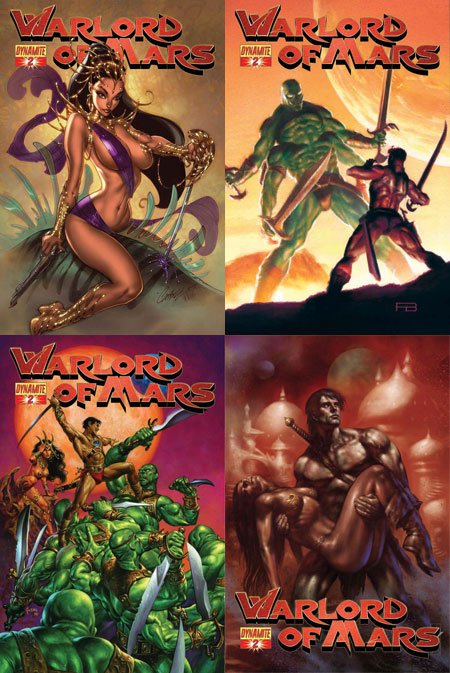
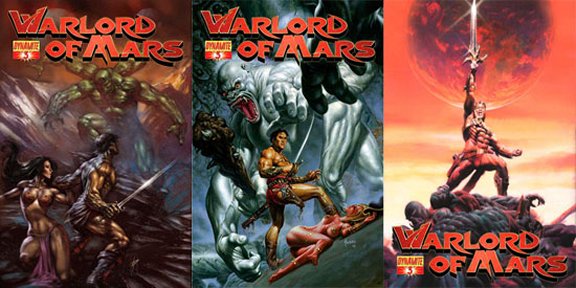
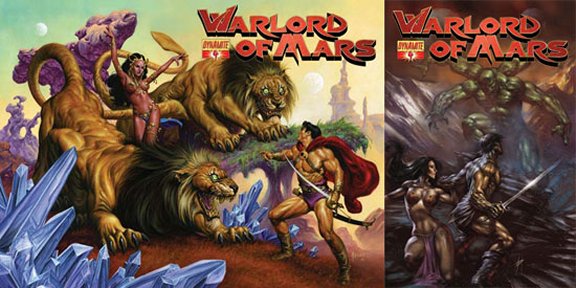
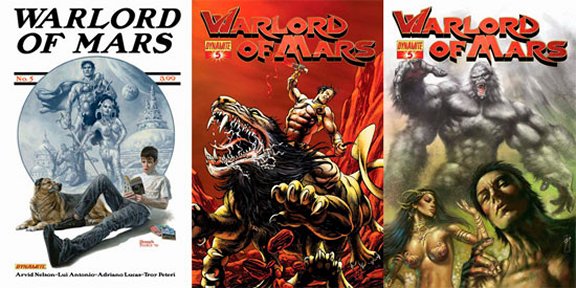
|
http://www.erbzine.com/mag22/2289.html For John Carter of Mars projects authorized through the years see: http://www.johncarterofmars.ca |
DEJAH THORIS ON DYNAMITE Spinning off from the incredibly successful Dynamite Entertainment Warlord of Mars series, Warlord of Mars: Dejah Thoris #1 will arrive in comic book stores March 2011!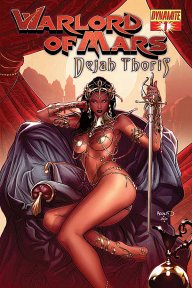
Martians live forever -- everyone knows that. So what was Dejah Thoris doing all those hundreds of years before John Carter arrived? Four hundred years before the events of Warlord of Mars took place, Dejah's nation of Helium was divided into two warring city-states. An unscrupulous overlord from afar encouraged that rivalry to his own advantage, until he discovered a terrible secret from Mars' ancient past beneath Dejah Thoris' capital. A secret to kill for!"Burroughs left so many tantalizing breadcrumb trails in the first few Mars novels, but he never followed most of them," says writer Arvid Nelson. "This series is going to follow some of those trails. We're going to see how Dejah Thoris' kingdom of Helium rose to preeminence. We're going to see her first suitor. And we're going to see Dejah herself kick some ass. She's a great character, totally deserving of her own series. It's great having her in a more active role."
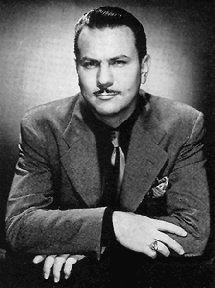
Maxon Dailies in France
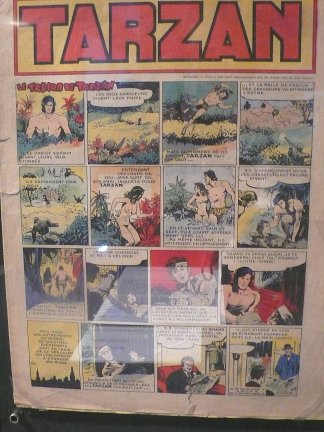
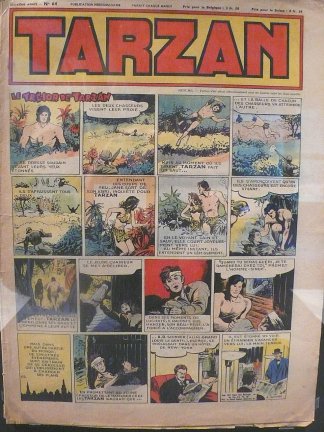


Collated, Coloured and Censored
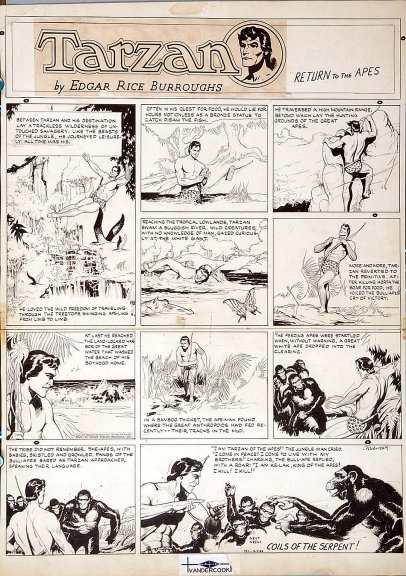
Rubimore Original Sunday Page Art
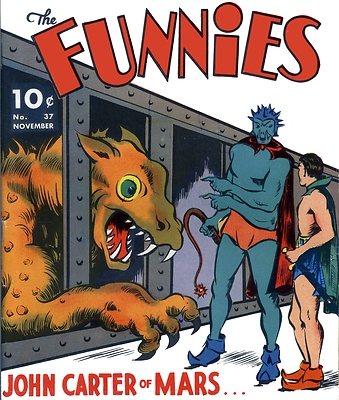
|
ERBzine Comics Encyclopedia www.erbzine.com/comics |
![]()
|
|
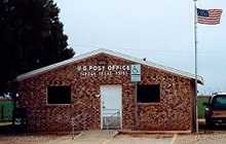
A brisk breeze in Tarzan |
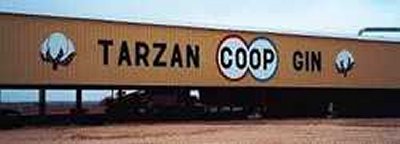
The Biggest Structure in Tarzan |
An abandoned store buildingTarzan wasn't formed until the 1920s. That's why you never heard of Fort Tarzan, Texas. The town gets its unusual name from a submission to the postal service that was accepted. . . . Tarzan was just one of fourteen names submitted to the postal authorities by storekeeper Tant Linsey. Perhaps the other names are still on file somewhere in D.C. . . . The boys in the postal service thought it was great fun to have a Tarzan, Texas. After all, they didn't have to live there. The year was 1927 and Tarzan's popularity in the comic strips was right up there with Krazy Kat. Of course, when people thought of Tarzan in 1926, they thought of Elmo Lincoln instead of Johnny Weissmuller. Not that it makes much difference.
The "turning point" for Tarzan (the Town) came in 1938 when a highway was built from Big Spring to Andrews. Its equidistance made it a natural stop for whoever might be traveling between these two cities. The turning point for Tarzan (the Apeman) was when he met Jane. Everybody knows that.
About the only other information we could glean from the Handbook of Texas was that oil was discovered in the 1950s and the Tarzan Hot Oil Company was formed. The next time you see an 18-wheeler with TARZAN HOT OIL COMPANY written on the side, ask them why the oil has to be hot, or if it really is.
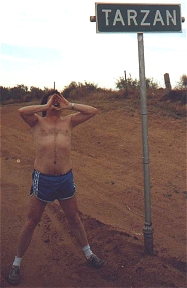
‘Nuff said! |
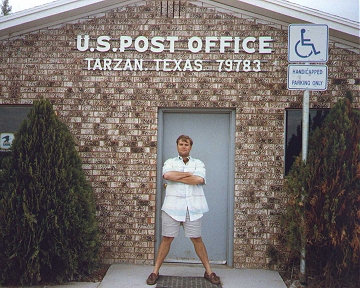
John McGuigan outside the post office at Tarzan, Texas |
![]()
TARZANA, CALIFORNIA PHOTOS
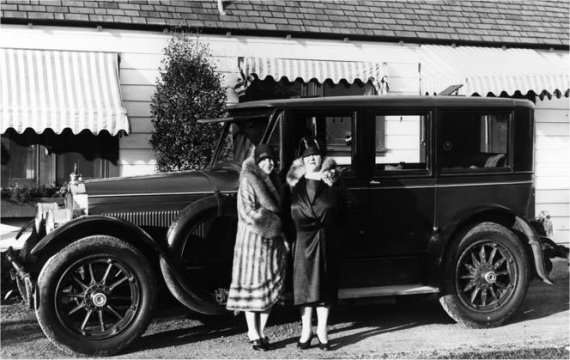
Ed's family with his 1923 Packard Twin 6 |
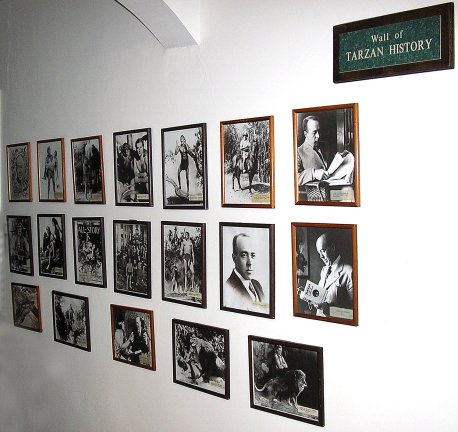
From The Museum of the San Fernando Valley Blogsite Wall of Tarzan History ~ Tarzana Community and Cultural Centre |
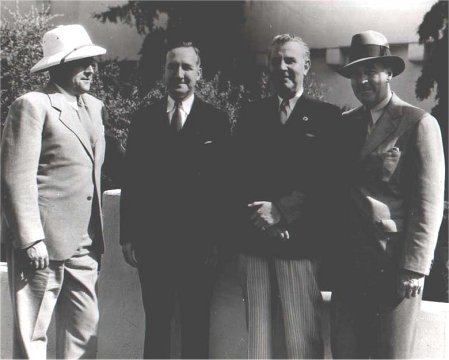
Ed Burroughs and Associates |
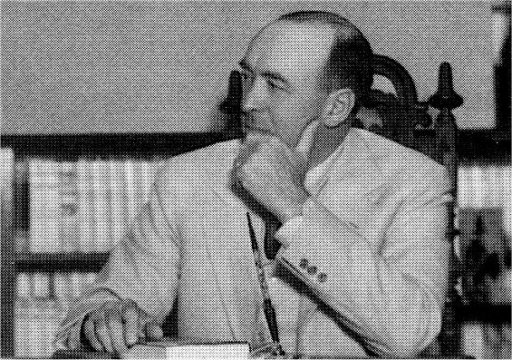
ERB at a Book Signing |
|
http://www.tarzana.ca http://www.edgarriceburroughs.ca |
![]()
|
|
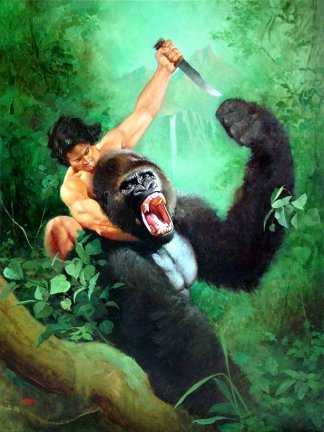
Tarzan and the Great Confrontation by Enrique Torres Prat |
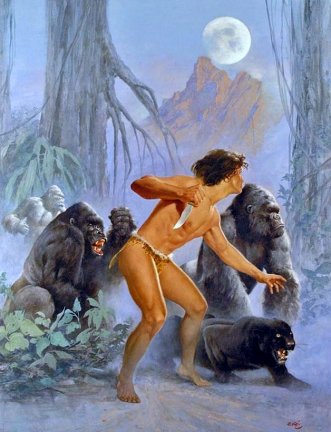
The Beasts of Tarzan by Enrique Torres Prat |
![]()
http://www.erbzine.com/mag7/0754.html
http://www.tarzan.org/yeates
http://www.erbzine.com/swag
http://www.outlawprince.com/
![]()

![]()
![]()
BILL
HILLMAN: Editor and Webmaster
BILL
AND SUE-ON HILLMAN ECLECTIC STUDIO
ERB
Text, ERB Images and Tarzan® are ©Edgar Rice Burroughs, Inc.-
All Rights Reserved.
All
Original Work ©1996-2010/2017 by Bill Hillman and/or Contributing
Authors/Owners
No
part
of this web site may be reproduced without permission from the respective
owners.